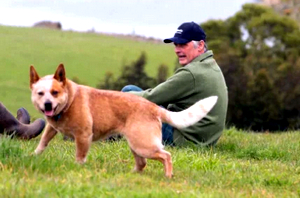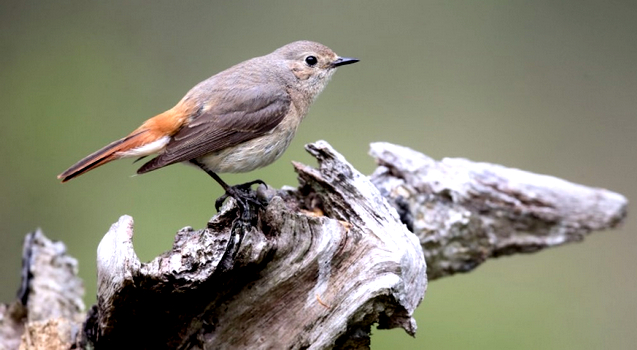
|
|
Robert Socolow
|
Author Robert Socolow is professor emeritus in the Department of Mechanical and Aerospace Engineering at Princeton University. From 2000 to 2019, he and Steve Pacala were the co-principal investigators of Princeton’s Carbon Mitigation Initiative, a twenty-five-year (2001-2025) project supported by BP. His best-known paper, with Pacala, was in Science (2004): “Stabilization Wedges: Solving the Climate Problem for the Next 50 Years with Current Technologies.” Socolow is a member of the American Academy of Arts and Sciences, an associate of the National Research Council of the National Academies, a fellow of the American Physical Society, and a fellow of the American Association for the Advancement of Science. |
Embedded in nearly all of our future-oriented analyses is an assumption that global economic activity (global gross domestic product) will increase steadily throughout this century. No techno-economic model that I am aware of investigates global economic collapse.
Leaders in government and the private sector, who constitute the desired audience for such scenarios, would not wish to be seen taking global dysfunction seriously. But today, global economic collapse seems not inconceivable. It would result from an escalation of the current conflict in Ukraine that “goes nuclear.”
When I teach about climate change, I mention the assumption of continuous global economic growth in passing.
Dutifully, I say to my students something like: “This model assumes that no war or pestilence prevents global economic growth.” It’s a cautionary rhetorical moment that the students duly note, and then the students and I push on. But the same sentence does not feel rhetorical today.
Civilization is at risk. Humanity is confronting the possibility of careening backwards into a world of stagnation and misery.
Climate change is a manifestation of prosperity.
Other things being equal, climate change will arrive more slowly if greenhouse gas emissions from human activity plunge to a small fraction of their current value and stay down. Nuclear war could even bring “nuclear winter,” if the lofting of fire-generated aerosols into the stratosphere causes extensive cooling.
Members of my generation, who were young adults during the Cold War, have never been able to vacuum the possibility of nuclear war out of our brains.
The vast majority of the world’s younger people, however—as best I can tell—consider nuclear war a nightmare from the past whose risks were dealt with successfully long ago by their parents or grandparents.
No need even to learn about it. It is so over!
But evidently it isn’t! No friend I have sought out or pundit I have listened to this past week has provided me with a satisfactory explanation for Putin’s decision to make Russia’s nuclear weapons look usable. It seems reckless and in no way to his advantage.
I have long presumed that no leader or national security advisor anywhere would ever lose track of the objective of preventing escalation and would cease to appreciate that the one clear firebreak against escalation to Armageddon is the gap between non-nuclear and nuclear weapons. Why would anyone want to erode that boundary?
During the Cold War and in the decade after, those seeking to prevent nuclear weapons use included many Russian and Western scientists.
We saw our task as promoting mutual understanding, developing back channels for communication, inventing trust-building exercises, sharing the insights of arms control analysis, and safeguarding plutonium and highly enriched uranium. We made a difference.
I have the impression that the global scientific community’s current aggregate level of effort toward such objectives is substantially less than it was. I suspect one reason is that scientists, like so many others, found tensions between countries to be low enough to relax their efforts.
And another reason, probably, is that scientists came to see that they were less able to influence government decisions and priorities. They became less needed and less wanted.
It has become all too clear this past week that the global scientific community must reinvent the informal, cooperative, scientist-to-scientist relationships that once were so valuable. We must never again consider these relationships unnecessary, even if they are no longer as salient as they once were. Not just Russia’s scientists, but China’s too must participate. The Bulletin can help us.
A more profound mutual understanding may be achievable if the potentially contentious search for safeguards against the use of nuclear weapons is leavened with explorations of climate change.
No one can long ignore the interdependence of nations when studying the Earth’s atmosphere—a giant blender homogenizing the greenhouse gas emissions every one of us contributes.
Links
- Climate collapse: The people who fear society is doomed
- ‘Collapse of Civilisation is the Most Likely Outcome’: Top Climate Scientists
- New Research: Human Civilization Will Likely Collapse By 2050
- Is it true climate change will cause the end of civilisation by 2050?
- Scientists Warn Humanity in Denial of Looming ‘Collapse of Civilization as We Know It’
- Climate change helped destroy these four ancient civilisations
- Climate change and the rise and fall of civilizations
- 2 Degrees of Warming: Bad, Not the End of Civilization
- Civilization could crumble by 2050 if we don't stop climate change now, new paper says




